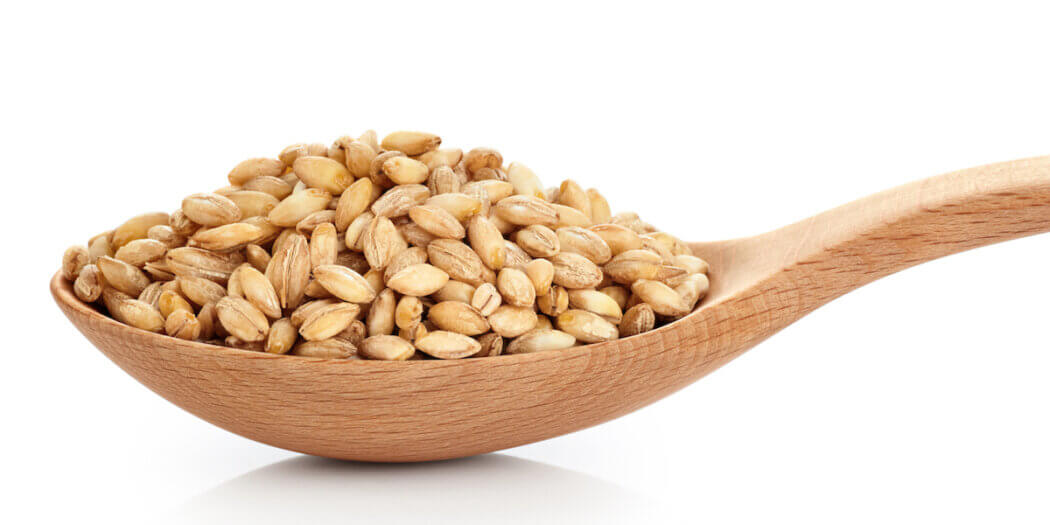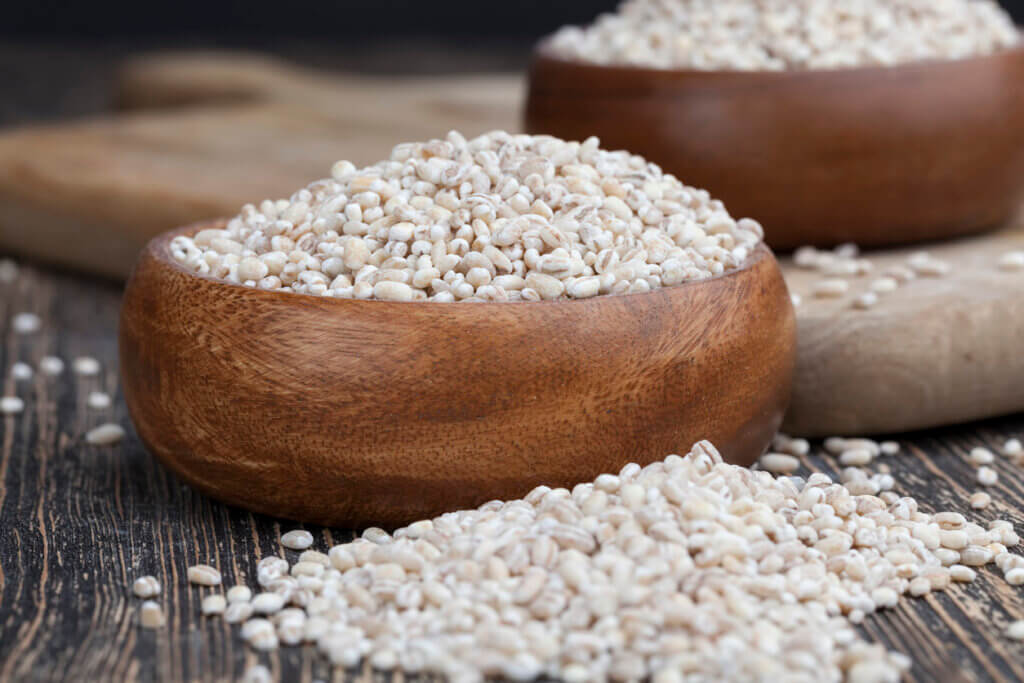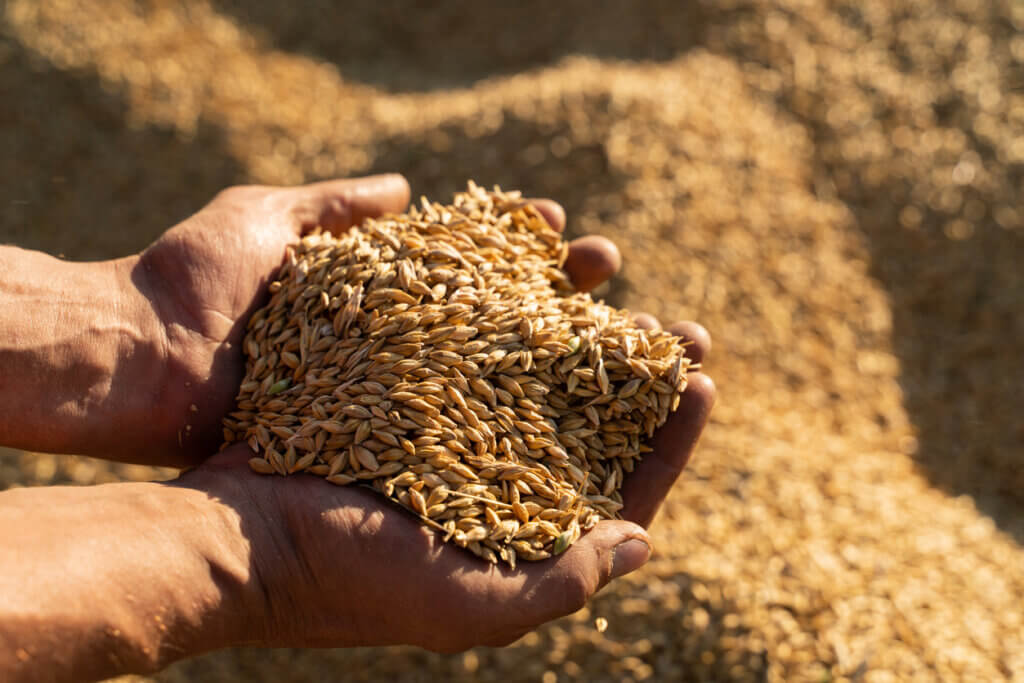Grocery Guides
Barley: History, Nutrition, and Storage Tips

Quick Answer
What is barley?
Barley is a cereal grain in the grass family that has a nutty flavor and chewy texture. It is the 4th most popular grain grown in the world by volume, only behind corn, rice, and wheat. Its high popularity is due to its ease of growing, quick harvest seasons, and high nutritional value.
What is barley used for?
Over half of the barley produced in the world is used to feed animals. Barley is also commonly used in soups and stews, bread, or even just eaten as a side dish. One of the biggest uses of barley is to produce beer and whisky. Malted barley is used in beer brewing to give beer its color, body, and sweet flavor. A couple of unique uses for barley include coffee and tea. It is used for these as a caffeine-free alternative.
Where did barley originate from?
Barley was one of the first cultivated grains and can be traced back to around 9,000 B.C. in the Fertile Crescent. Its range soon stretched to the Middle East, North Africa, and as far east as Tibet. It eventually made it to Eurasia around 2,000 B.C., where it became highly coveted. It did not make it to North America until the 17th century when European colonists brought it here.
Beer made from barley was one of the first alcoholic drinks humans created. It was so important it was even used as currency at different points throughout history. In current times, Russia, France, and Germany lead the world in the production of barley.

What is the nutritional value of barley?
Barley is a very nutritious grain. A half-cup of uncooked barley, which turns into a full cup when cooked, contains these nutrients:
- 354 calories
- 73.5g of carbohydrates
- 17.3g of fiber
- 12.5g of protein
- 97% of the recommended daily intake (RDI) of manganese
- 54% of the RDI of selenium
- 43% of the RDI of thiamine
- 33% of the RDI of magnesium
- 26% of the RDI of phosphorus
- 25% of the RDI of copper
- 13% of the RDI of potassium
How is barley grown?
Barley is a highly adaptable crop and can be grown in many areas. It grows relatively quickly, so it can be planted and harvested multiple times a year. While it is drought tolerant, it isn’t very cold tolerant. It can germinate as soon as one day after being planted and can be harvested in less than two months. The two primary varieties are two-row and six-row, which is determined by the arrangement of the kernels on the plant. It is also self-pollinating, so you don’t have to worry about having a large number of plants to ensure pollination.
Barley is sowed in rows at a rate of 20 seeds per square foot. It can be planted in October for a winter harvest, January for a spring harvest, or March for a summer harvest. It likes well-drained soil since it can decompose easily with too much moisture.
Barley is manually harvested with a sickle or a combine machine when it reaches full maturity. You’ll know it’s ready when its color is golden, and the plant is brittle. It is then dried until the barley easily falls off the plant, indicating that it is ready to eat.
Almost all of the barley grown in the United States comes from Idaho.

What is the shelf life of barley?
You can keep uncooked barley for as long as two years in your pantry. Once cooked, it will last for as long as a week when refrigerated or for a few months in the freezer.
What should I look for when buying barley?
Barley is sold as food in a few different forms, which can alter its nutritional benefits.
- Pearled barley: This form of barley has already been steamed, removing the bran and hull of the grain. Unfortunately, it does lower the number of nutrients, but it does make it quicker to cook.
- Hulled barley: This style of barley only has the hull removed, but not the bran. This lets it retain additional nutrients, but it takes extra time to cook.
- Barley flakes: These are made to mimic rolled oats. They cook the fastest, but they have the lowest nutritional content.
If you are looking to have your groceries delivered, you can easily shop for barley via Instacart. After adding a product to your cart, use the “Instructions” option to notify your Instacart shopper about any preferences or specific directions on how to choose the best products. Shop for barley.

How to store barley
Barley should be stored in a cool, dry location in an airtight container. If you are cooking it to freeze it, make sure it is in a freezer-safe bag with as much air removed as possible.
How to tell if barley is bad
If barley goes bad, it will either become moldy, start to lose its color, or develop an off taste or smell. It should also be inspected for insects, which can infect the container. If it has any of these issues, toss it.
What can I substitute for barley?
Since barley is a whole grain, a wide variety of other whole grains can take its place in a recipe. Farro is the closest match since it has the same texture and flavor as barley. Other substitutions include quinoa, buckwheat, millet, oats, sorghum, and brown rice.
How to find barley near you
Barley can be found at any grocery store near you in the grain aisle. When you need to buy more barley, be sure to use Instacart so you can have it delivered on the same day or in the future.
Most Recent in Grocery Guides

Grocery Guides
15 Tasty Ice Cream Alternatives: Yogurt, Shaved Ice & More
Ice cream has been a beloved treat for generations. With its rich flavors and smooth texture, it’s no wonder people choose ice cream when looking for dessert. However, as dietary restrictions and health consciousness evolve,…...
Apr 10, 2024![When Is Artichoke Season? [Recipes + Guide]](https://www.instacart.com/company/wp-content/uploads/2024/03/when-is-artichoke-season-hero-447x224.webp)
Grocery Guides
When Is Artichoke Season? [Recipes + Guide]
Quick Answer When is artichoke season? In North America, artichoke season is from March to May, with smaller batches in October. Artichokes are a unique and versatile vegetable known for its tender heart and delicate…...
Mar 6, 2024
Grocery Guides
Brown Eggs vs. White Eggs: How Are They Different?
Eggs are an essential ingredient in many sweet and savory recipes. The possibilities are endless when it comes to using these protein-packed powerhouses — you can scramble, fry, boil or poach eggs, or you can…...
Feb 24, 2024

 Squash – All You Need to Know | Instacart Guide to Fresh Produce
Squash – All You Need to Know | Instacart Guide to Fresh Produce  Ghost Pepper – All You Need to Know | Instacart Guide to Fresh Produce
Ghost Pepper – All You Need to Know | Instacart Guide to Fresh Produce  Sprouts – All You Need to Know | Instacart Guide to Fresh Produce
Sprouts – All You Need to Know | Instacart Guide to Fresh Produce 

